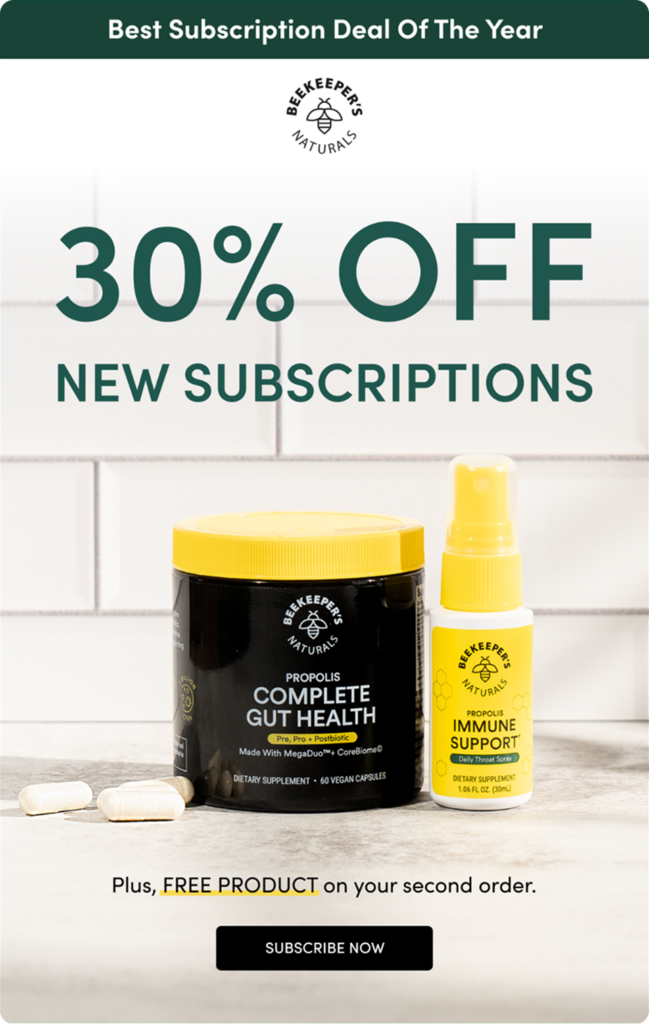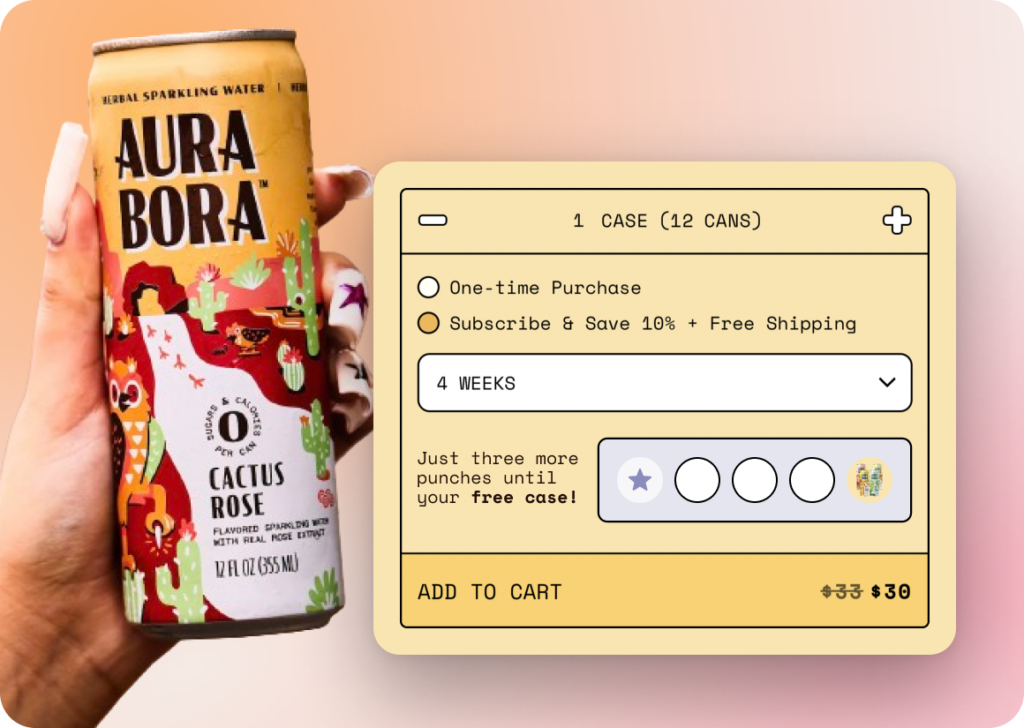Key takeaways:
- Often-overlooked factors of calculating SAC include packaging, free gifts, discounts, and more.
- Measuring metrics like customer lifetime value (LTV) and first-order cancel rates is crucial to ensure you’re attracting loyal subscribers rather than one-time deal seekers.
- Lower your SAC by avoiding a discount-dependent culture, reframing subscriptions, converting existing customers, and using Digital Punch Cards.
There isn’t much mystery to calculating customer acquisition costs (CAC) in ecommerce. The formula is well-known, and most of the considerations within that calculation are standard.
Subscriptions add different layers to the equation. There are no standards for calculating a subscription discount into your subscriber acquisition costs (SAC).
And what about those free gifts?
Bundles?
No standards to be found.
Which means you might not be counting them. It also means you might not be considering other very critical factors in your SAC.
Don’t worry, we’re going to get to that, as well as ways to lower your SAC. To make sure we’re all on the same page, though (and because the title of this article says so), we’ll start with the formula for calculating subscriber acquisition costs.
The formula for calculating subscriber acquisition costs looks pretty familiar
Total marketing costs/ number of new subscribers = SAC
(Example: If you spent $30,000 in a single month and acquired 1,000 new subscribers in that time, your SAC would be $30 per subscriber.)
Does the formula look familiar?
It should because it’s been the standard formula for calculating one of the most fundamental metrics in ecommerce since, well, since it was just retail. That’s right, it’s the formula for customer acquisition costs (CAC), but customer is swapped for subscribers.
Considerations for calculating SAC (including some you might not have thought of)
If we say “free shipping” or “side cart upsells,” do you automatically think “marketing”? Probably not. Yet, they should when you’re rounding up the marketing expenses to calculate SAC.
So are these factors:
- Packaging/shipping costs
- Marketing tools/ software
- Marketing/sales/subscription management employee salaries
- Marketing content creation costs (for all marketing channels)
- Discounts
- Free gifts
- Free samples
- Bundles
- Upsells and cross-sells
Packaging and shipping costs are often not included in SAC or CAC. Still, we typically factor them in if you offer free shipping or if your packaging enhances the unboxing experience.
Unboxing a product is part of the overall experience a customer has with your brand. You might include confetti in the box during the customer’s birthday month or a nice welcome message in the box. If unboxing goes beyond simple shipping, count it.
Discounts, free gifts, and samples can often push a customer over the decision-making edge, and they can also do just as much to keep someone subscribed.
For instance, if you’re offering a recurring discount as part of the subscription (their cat litter is five dollars cheaper when they’re subscribed versus unsubscribed), they’re more likely to stay subscribed.
This is an appetizing deal that also counts as a marketing cost.
Be aware of your customer lifetime value (LTV)
If your LTV is only fifty dollars, but your customer acquisition is one hundred and fifty, your acquisition efforts aren’t going to pay off.
So, consider your LTV when deciding how much you’re willing to spend on customer acquisition.
Measure first-order cancel rate
Did you just gain 10,000 subscribers from a new welcome offer you’re running? Great! How many of them stuck around past their first order?
If nearly all of your new subscribers cancel after the first order, they were there for the deal and the deal alone. That should signal an immediate change to your welcome offer.
Ways to lower your subscriber acquisition costs
Slash everything! It’s a cost-reclamation event, and all sales and discounts must go. No more free gifts. No more bundles. It’s time to bank on a good product and word of mouth.
If only every brand could.
Looking for ways to lower your SAC is a constant task for any brand, but you don’t have to go to extremes to do it.
Here are just a handful of creative ways to lower your acquisition costs (that don’t involve lowering your ad costs or spending less on marketing software, which are probably suggestions you’ve heard all too often).
Use Shopify Audiences and Shop Cash
Shopify Audiences cross-pollinates your Facebook audience with other Facebook audiences, allowing you to reach a wider audience with minimal effort.
Shop Cash is a rewards program that acts a lot like affiliate marketing, but without the upfront risk to your brand.
When customers use their Shop Cash on your site, it applies as a discount to their purchase. They’ll pay any remaining balance with Shop Pay.
Avoid creating a discount culture
This might sound a little strange, but lowering your SAC isn’t always about finding ways to lower your SAC; it’s about changing the mindset of your customers.
Most brands jump straight to discounts, free gifts, and other exorbitant welcome offers, hoping they’re making the deal attractive enough to wrangle in new subscribers. The unfortunate side effect of this can be that the brand creates a discount culture.
Think about it this way: A prospective customer has the option to make a one-time purchase of $100 or a subscription purchase of $70, plus a free gift and free shipping.
The brand front-loaded all of these offers and raised its cost of acquisition. The customer cancelled after their first purchase. They got the discount. They got the gift and the free shipping.
The brand didn’t lock them out of getting this deal again at a later date, so they come back for the deal time and again without commitment. The brand is stuck paying the shipping and spending on that free gift.
Creating an attractive welcome offer is still the pinnacle of all subscriber acquisition strategies. Just don’t offer customers too much upfront.
Remove all free trials from your program
This one might be a little controversial, but you could pull in 10,000 free trials with no resulting subscriptions (we’ve seen it before).
That’s not to say free trials aren’t effective for some brands in some industries, but results are wobbly at best.
Reframe your subscription program around VIP benefits
Subscribers are insiders. They’re your most ardent fans. They’ll stick around too, as long as you continue to show them you love them back. Not with words, but with actions, such as:
- Giving them access to products before the general public
- Deeper discounts on the products they buy regularly
- Greater access to their customer service team
- Free shipping
- Unique access to in-person events
- A welcome to see the behind-the-scenes of your operation
We had a merchant that created a pop-up store in various locations, and they only sent invitations to their subscribers. It was a massive success.
If you’re limiting benefits to a 10% discount, you’re training customers to look for discounts. It’s not helping your overall acquisition strategy.
Creating reasons to love your brand, on the other hand, will.
Farm your existing customer base
One-time purchasers often aren’t purchasing just once. There will always be a portion of your customer base that buys the same product repeatedly without subscribing.

Working to convert them to subscribers is like bobbing for apples. It might take a little work and coordination, but they’re in a barrel, not floating down a river. You’ve got them. They’re already fans.
Reach out to them to share just how much their continuous business means to you, and that you’d like to pay them back with subscription benefits.
(They might not have even known you had a subscription program.)
Use Digital Punch Cards to create excitement upfront
Loyalty is an acquisition strategy, no doubt about it, and Digital Punch Cards generate the kind of loyalty that turned Lancelot into a Knight of the Round Table. Except… you know, your brand is the Round Table, and all of your subscribers are… Okay, you get it.

Digital Punch Cards help you build excitement for your subscription program because they give subscribers something to look forward to over time. And, since you’re showcasing these rewards upfront, they just happen to work as an acquisition tool as well.
All of our brands can take advantage of this tool without additional costs, because this feature is included with every Stay AI subscription. Hence, why we count it as a way to lower your CAC.
FAQs:
What is the formula for subscriber acquisition cost?
The formula for subscriber acquisition costs is the same as the formula for customer acquisition costs, but with subscribers in place of customers.
Total marketing costs/ number of new subscribers = SAC
What is a good subscriber acquisition cost?
A good subscriber acquisition cost is three times lower than your customer lifetime value.

